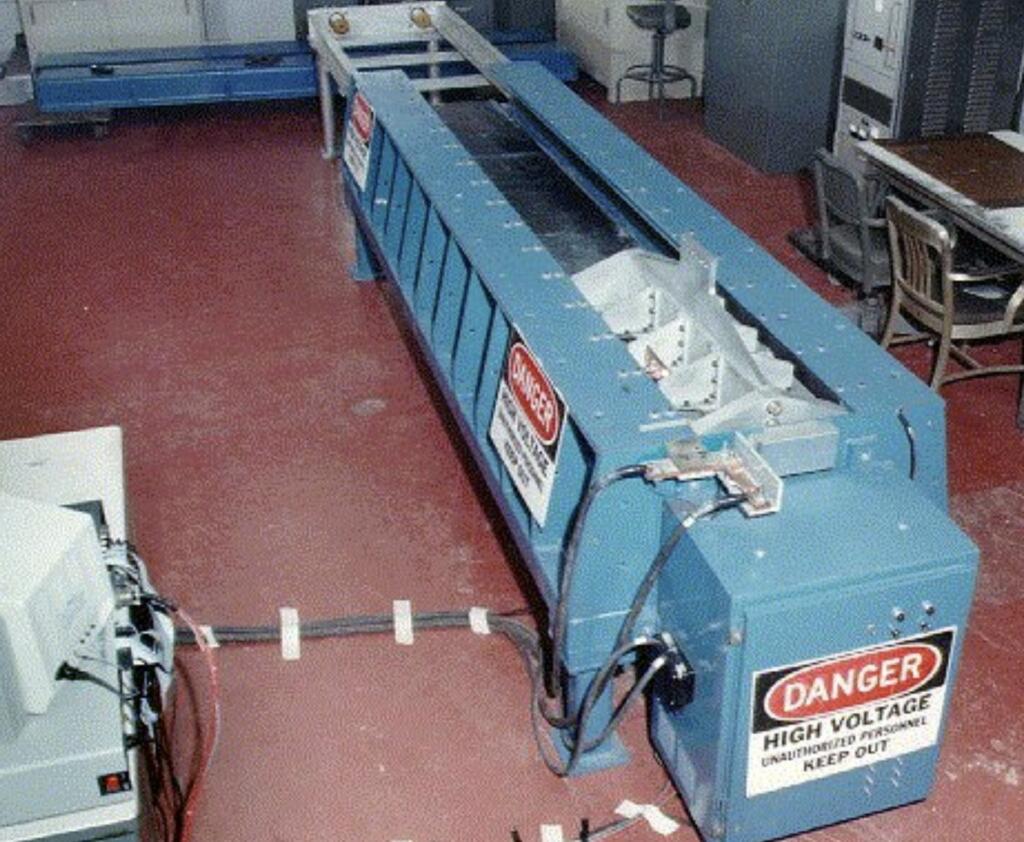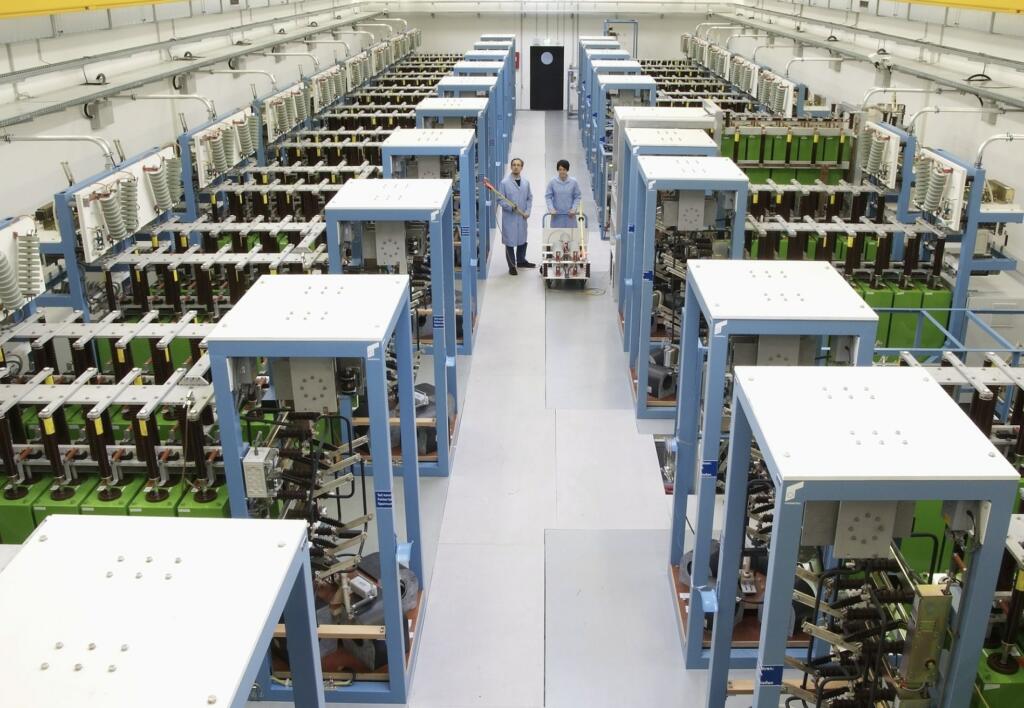CASIC has built a 2000 meter long low-vacuum track high-speed maglev test facility in the industrial heartland of Datong, Shanxi province. This is able to accelerate heavy object to speeds approaching 1,000km/h (620mph)– close to the speed of sound. China wants to launch a hypersonic space plane weighing 50 tonnes and measuring longer than a Boeing 737. It is part of the Tengyun project unveiled in 2016.
In the coming years, the length of the test line will be extended to achieve a maximum operating speed of 5,000km/h (3100 mph).
If the US magnetic launcher uses 121 megajoules to accelerate to a plane to 150 mph then the current CASIC system would need about 2000 megajoules to get a full sized plane to 620 mph. I would expect they are accelerating one ton or less and using about 100 megajoules or less.
Accelerating to five times the speed (3100 mph) would need 25 times more power for the same sized object. This would mean around 50,000 megajoules.
A regular gigawatt reactor would be making a gigajoule each second. However, the power could be stored in massive capacitors or batteries. A nuclear reactor could charge up massive amounts of capacitors for 50 seconds which would then be discharged for the launch.
The HLD (Hochfeld-Magnetlabor Dresden- Dresden High Magnetic Field Laboratory) has an in-house coil development and production program. The Germans aim is to achieve a field of 100 teslas over a pulse duration of 10 milliseconds. The required energy of 50 MJ is provided by the world’s largest capacitor bank, custom-made for this laboratory.
China would need 2000 of the disk alternators in the US Ford aircraft carrier or 1000 times the capacitor bank of the Dresden magnet lab.


The scale of what China is talking about building seems to be about 1000 times the power of the largest capacitor or electromagnetic launcher. China would need to have some breakthroughs on the technology and the mass production of key systems. It also seems that for this to be worthwhile and practical, China would want to be able to use the giant magnetic launcher with high frequency. The launcher and energy systems would be a huge investment.
The Electromagnetic Aircraft Launch System (EMALS) on the US Ford-class aircraft carrier can accelerate jet fighters to speeds over 150 miles per hour (241 kilometers). Compared to steam catapults, EMALS weighs less, occupies less space, requires less maintenance and manpower, can in theory be more reliable, recharges quicker, and uses less energy. Steam catapults, which use about 1,350 lb (610 kg) of steam per launch, have extensive mechanical, pneumatic, and hydraulic subsystems. EMALS uses no steam, which makes it suitable for the US Navy’s planned all-electric ships.
Compared to steam catapults, EMALS can control the launch performance with greater precision, allowing it to launch more kinds of aircraft, from heavy fighter jets to light unmanned aircraft. With up to 121 megajoules available, each one of the four disk alternators in the EMALS system can deliver 29% more energy than a steam catapult’s approximately 95 MJ. The EMALS, with their planned 90% power conversion efficiency, will also be more efficient than steam catapults, which achieve only a 5% efficiency.

During the 8,157 EMALS catapult launches conducted 2022, EMALS achieved a reliability of 272 mean cycles between operational mission failures (MCBOMF), where a cycle is the launch of one aircraft. This reliability is well below the requirement of 4,166 MCBOMF.

Brian Wang is a Futurist Thought Leader and a popular Science blogger with 1 million readers per month. His blog Nextbigfuture.com is ranked #1 Science News Blog. It covers many disruptive technology and trends including Space, Robotics, Artificial Intelligence, Medicine, Anti-aging Biotechnology, and Nanotechnology.
Known for identifying cutting edge technologies, he is currently a Co-Founder of a startup and fundraiser for high potential early-stage companies. He is the Head of Research for Allocations for deep technology investments and an Angel Investor at Space Angels.
A frequent speaker at corporations, he has been a TEDx speaker, a Singularity University speaker and guest at numerous interviews for radio and podcasts. He is open to public speaking and advising engagements.


I feel a system like this more useful for putting small loads into space. Imagine having a ton into space every few minutes, and being able to do this 24/7.
Assuming you can exit the launcher at a speed of Mach 5, what size rocket would you need to get a ton of cargo into LEO?
Also … since the authors are computing things numerically, let’s also take TIME and ACCELERATION limits into consideration too.
For instance, space planes carrying people (which doesn’t seem like a bad plan), needing to get 3,000 MPH (4800 km/h) … → 1,340 m/s of ΔV really ought not to accelerate the occupants more than 10 G’s, or 100 m/s². So, at full-on maximum acceleration, that’d be 13.5 seconds. And since D = ½at², we have D = ½(100)(13.4²) = 9,000 m track.
All conveniently small. Pointed “up a mountain” seems like the most-right idea. More or less in the right direction for rocket burn.
1,340 m/s is also (½mv² = kinetic energy) 900,000 joules per kilogram. 0.9 MJ/kg, 900 MJ/ton.
Ideally, using the most compact, reliable energy storage feels optimal. Capacitors have almost legendary charge-discharge capacity, never wearing out. Not so batteries. But batteries can stuff 1000× the joules per can.
⋅-⋅-⋅ Just saying, ⋅-⋅-⋅
⋅-=≡ GoatGuy ✓ ≡=-⋅
Here what matters, except maybe for the first little bit of the track, is power density, not energy density. Maybe the battery holds more energy, but if it’s not available in the tiny widow it’s needed in, what good is it? If your battery needs to be oversized by that same factor of thousands to supply the peak power, might as well use caps.
A lot depends, I suppose, on whether this is an O’Neill style mass driver, or just a mammoth rail gun. In the former you need the caps anyway for your LC network.
Ah, now that I look closer, they are planning a rail gun. I guess my L-5 society background just naturally has me thinking mass drivers…
The case for batteries with a rail gun is better; Rather than thousands of current pulses, you’ve got one long sustained surge. The batteries can deliver their power over the course of the entire launch.
It’s important to remember that, if your mass driver is 10s of kilometers long, your energy storage is distributed over 10s of kilometers. We’re not talking one energy storage facility, we’re talking thousands of much more modest ones. Each segment of the accelerator gets its own capacitor bank.
A further reminder: Energy equals force through distance, and acceleration is force divided by mass; Each unit length of the accelerator actually consumes the same amount of energy per launch, the ones towards the end just consume it over a shorter period of time, because they have less time to deliver their kick to the payload.
So, mass produced, largely identical capacitor banks, not one record shattering bank.
Good that someone is finally building this.
Is it though? This seems to struggle with economies of scale. This only works if the vehicle has enough initial velocity to be a single stage to orbit vehicle and that implies smaller launch vehicles that must be produced in abundance.
Starship can put 150 tons in to orbit, this maybe 10. So off the bat you have to have 10x the launch vehicles with 10x the launches.
Mass produced rapidly reusable Starship with Raptors that cost a fraction of a million each makes it obsolete before it’s built and it would take a long time to develop and build.
It’s not a bad tech to develop. O’Neill’s use made more sense though.